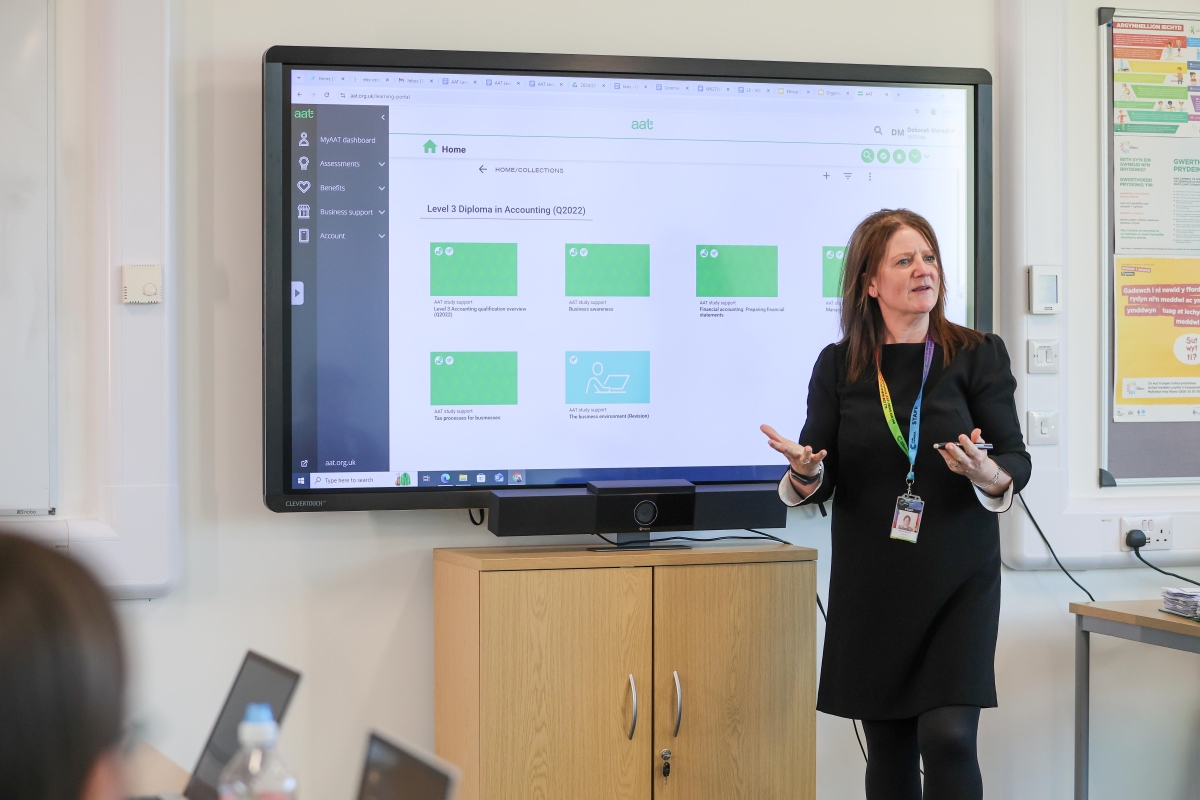Broadcast and media systems technician

KSBs
Knowledge
K1: Know where to source the correct maintenance procedures and schedules relevant to own role Back to Duty
K2: How to obtain functional and specification documentation such as equipment manuals, system specifications, manufacturers’ maintenance plans, design documents, fault logs/databases, regulatory requirements, functional specifications and operational handbooks for maintenance Back to Duty
K3: Understand the maintenance characteristics that are particularly critical to the broadcast and media equipment or system, including electrical, electronic, mechanical, software, environmental and ergonomics Back to Duty
K4: Understand the safe systems of work and isolation for working on antennas, high voltage, power boards, switchboards and uninterruptable power supplies Back to Duty
K5: Know and understand the factors affecting decisions about ongoing maintenance versus replacement, including cost, downtime, reliability Back to Duty
K6: How to connect broadcast systems and equipment to IT systems Back to Duty
K7: Understand the types of faults that may occur in broadcast and media systems and how to identify these Back to Duty
K8: How to conduct root cause analysis Back to Duty
K9: Why it is important to minimise equipment and systems downtime, and to solve problems quickly e.g. loss of service and potential reputational damage, or financial penalties for breach of service level agreements Back to Duty
K10: Know and understand own Business Continuity procedures Back to Duty
K11: Know and understand own workplace Health and Safety legislation, processes and procedures Back to Duty
K12: Know how to safely use and maintain Personal Protective Equipment (PPE), tools and equipment Back to Duty
K13: Understand the company procedures for reporting hazards and risks to the appropriate personnel Back to Duty
K14: Understand the main hazards to personal health and safety within own role such as electrical voltage and radio frequencies (RF) Back to Duty
K15: Understand the different types and uses of broadcast and media systems test equipment such as analysers or meters Back to Duty
K16: Know and understand the importance of keeping testing equipment clean and accurately calibrated Back to Duty
K17: Understand the correct procedures for storing and transporting testing equipment Back to Duty
K18: Know and understand how to use the testing equipment correctly and safely Back to Duty
K19: Know when, and who to report faults with the testing equipment to Back to Duty
K20: Understand elementary analogue and digital electronic techniques Back to Duty
K21: Understand the fundamentals of digital signals, coding techniques, modulation and multiplexing techniques and fibre optic communication Back to Duty
K22: Understand Radio Frequency (RF) communication principles, wave propagation, transmission media and RF radiators Back to Duty
K23: Understand the principles, techniques and applications of computer network systems, ethernet and IP technology, network components, server systems, virtualisation and remote access technology Back to Duty
K24: Understand the purpose, benefits, limitations and risks of the different equipment and software required for broadcast and media systems and when it is appropriate to use them Back to Duty
K25: How to operate the broadcast and media systems, software and equipment required Back to Duty
K26: Know the types of problem that can occur with the operation of broadcast and media systems such as loss of power, signal degradation, overheating etc. Back to Duty
K27: How to prioritise operational problems and why it is important to solve a problem quickly Back to Duty
K28: Understand the technical quality of service requirements that affect your work Back to Duty
K29: Understand how to adapt communication style and supporting information to meet audience requirements Back to Duty
K30: Understand how to identify and advise on the most effective and realistic solution in each circumstance, taking constraints into account Back to Duty
K31: Understand the importance of and methods for, organising and storing information such as written descriptions, diagrams, note taking from meetings, feedback from reports, presentations and change control Back to Duty
K32: Understand how to use the organisational recording systems correctly Back to Duty
K33: Understand broadcast technical operations, technical systems and equipment and the context of their use in workplace activities Back to Duty
K34: Understand the broadcasting and media systems industry; its heritage and its future direction. Back to Duty
K35: Know how to use resources, such as online sites, to update knowledge and find out what others are doing Back to Duty
K36: Understand how and when to ask questions to improve your practice Back to Duty
K37: Understand the principles of design, architecture, development and maintenance of broadcast and media systems and networks Back to Duty
K38: Understand the brief for the work and how to interpret requirements and parameters as provided by the customer or line manager, or project manager and/or senior engineer Back to Duty
K39: Understand the file transfer protocols, relating to broadcast and media systems, software and equipment including file access rights Back to Duty
K40: Know how to connect broadcast and media systems and equipment to networks Back to Duty
K41: Know and understand the appropriate formats required for different broadcast methods such as Joint Photographic Experts Group Standard (JPEG) or Moving Picture Experts Group Standard (MPEG) files or MP3 (audio format of MPEG) Back to Duty
K42: How to protect content and the importance of information security Back to Duty
Skills
S1: Conduct planned maintenance on all systems in line with organisational procedures Back to Duty
S2: Ensure maintenance work complies with all relevant regulations and guidelines Back to Duty
S3: Take prompt action to respond to and diagnose any problems encountered Back to Duty
S4: Record maintenance carried out and actions taken in appropriate systems in line with organisational procedures Back to Duty
S5: Identify problems to broadcast media service or systems, conducting in-depth root cause analysis and fault finding as required Back to Duty
S6: Take ownership to resolve and/or escalate faults and incidents following the correct company procedures Back to Duty
S7: Communicate fault conditions in a timely manner, to colleagues, customers and service suppliers Back to Duty
S8: Log faults and report them to the relevant operational business area Back to Duty
S9: Comply with organisational Health and Safety policies, practices and procedures Back to Duty
S10: Identify, mitigate and report any incidents or risks to the appropriate personnel Back to Duty
S11: Complete Risk Assessments for tasks and work activities within and relevant to, own role Back to Duty
S12: Work safely and follow procedures for working on antennas, high voltage, power boards, switchboards and with uninterruptable power supplies Back to Duty
S13: Identify and obtain the appropriate test equipment required Back to Duty
S14: Ensure the equipment is in working condition and calibrated correctly Back to Duty
S15: Safely transport and store the testing equipment in line with organisational procedures Back to Duty
S16: Report any faults with the test equipment, rectifying these if appropriate Back to Duty
S17: Test and evaluate the performance of electronic circuits Back to Duty
S18: Use software and hardware diagnostics tools and connectivity protocols to interface and integrate broadcast systems Back to Duty
S19: Use test equipment correctly, evaluating results and taking the appropriate course of action Back to Duty
S20: Interconnect and trouble-shoot video and audio signals Back to Duty
S21: Identify and advise on the most effective and realistic solution in each circumstance taking into account constraints Back to Duty
S22: Use a level of technical terminology that meets the technical understanding of the person receiving the advice Back to Duty
S23: Adapt your communications style according to the audience Back to Duty
S24: Use supporting information that aids others’ understanding of advice when required such as system diagrams Back to Duty
S25: Check that the advice given complies with all relevant regulations and guidelines Back to Duty
S26: Ensure the delivery of systems/services to customers in line with agree service levels Back to Duty
S27: Comply with organisational systems for reporting and recording information Back to Duty
S28: Ensure records relating to planned and corrective maintenance are correctly completed and updated Back to Duty
S29: Create and maintain a professional development record to document progress against key competencies and enable effective learning from the workplace Back to Duty
S30: Seek help or advice from appropriate people or information sources when limitations in your knowledge or expertise will impact on your work Back to Duty
S31: Seek out learning and networking opportunities that will be most beneficial to you Back to Duty
S32: Remain flexible, adaptable and positive to new directions, creative requirements and technical developments Back to Duty
S33: Check that specifications are capable of being implemented and operated Back to Duty
S34: Implement upgrades or modifications in line with organisational procedures and specification Back to Duty
S35: Check ingested data or transport streams against workflow requirements Back to Duty
S36: Operate broadcast and media systems using methods and procedures that meet requirements Back to Duty
S37: Comply with the organisational processes for ensuring physical and electronic security of data and systems Back to Duty
S38: Play out or export media in line with requirements Back to Duty
S39: Check that outputs of broadcast and media systems comply with specifications, regulations, standards, guidelines and procedures Back to Duty
Behaviours
B1: A strong work ethic and commitment to meet the standards required Back to Duty
B2: Desire to expand technical knowledge, and passion for working with broadcast and media systems Back to Duty
B3: Thinking creatively and logically to solve technical issues – contributing to a process of continual improvement Back to Duty
B4: Recognition and compliance with workplace legislation, policies and procedures Back to Duty
B5: Displaying confidence in their approach to communicating with different audiences Back to Duty
B6: Building and maintaining positive relationships with colleagues, customers and suppliers Back to Duty









Responses